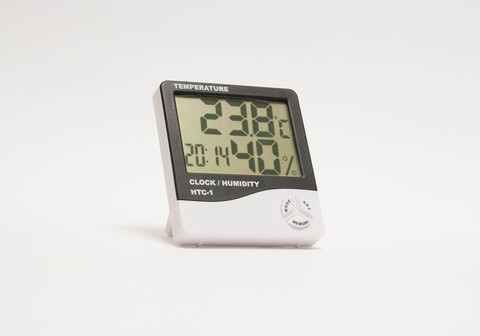With winter practically here, you’re probably cranking up your indoor heating. While heating is an important part of your home’s air quality, let’s not forget about the humidity.
Indoor heating sucks the humidity out of the air, leaving your home feeling uncomfortable. Not only that but air with a low humidity level can increase your risk of skin irritation and viral infection. With a humidity level too high, your home could be a breeding ground for mold spores.
What’s the right humidity level for your home? Today, we give you the answer to this question and more.

What is Humidity?
Humidity refers to the amount of water vapor in the air. The ideal humidity level for your home is between 30 and 50 percent. A humidity level higher than 50 percent could lead to mold growth and condensation on windows and toilet tanks. Increased condensation causes water droplets that could rot materials in your home. With a humidity level lower than 30 percent, you could experience dry skin, sinus issues, and increased static shocks. You may even be more prone to viral infections. One 2019 study found that low humidity increases the chance of viral transmission.
Now that you know a little bit about humidity levels and its effects, let’s talk about how you can balance moisture content in your home.
How Can You Achieve the Ideal Humidity Level?
Striking the perfect moisture ratio in your home lies in your heating and cooling system. Here are a few ways to obtain the ideal humidity level:
Install a Dehumidifier
A supplemental room dehumidifier is perfect for specific areas with too much moisture — such as basements, bathrooms, or bedrooms. If your entire home feels muggy, consider installing a whole-house dehumidifier. This is installed in your home’s HVAC system and removes moisture through the main vent system.
Install a Humidifier
A portable humidifier is most ideal for bedrooms, living rooms, and nurseries. A small humidifier should be enough to add moisture to the air and reduce skin and sinus irritations. However, depending on the size of your home, a portable humidifier may not be enough to increase the humidity level. In this case, consider installing a whole-house humidifier, or central humidifier. A whole-house humidifier is connected to your home’s HVAC and then hooked up to your plumbing system.
Switch to a Different Heating Method
A typical furnace heats the air then circulates it throughout your home — this process dries out the air. If the air in your home is dry only in winter, you may want to consider switching from a forced-air heating system to radiant heat. Radiant heat is installed under flooring and behind wall panels.
Get the Perfect Humidity Level
Investing in a humidifier/dehumidifier is the best solution for poor indoor humidity. It will increase comfort as well as reduce health complications.
The humidity solutions mentioned here should be performed by cooling and heating professionals. Contact us today to request a free quote.


